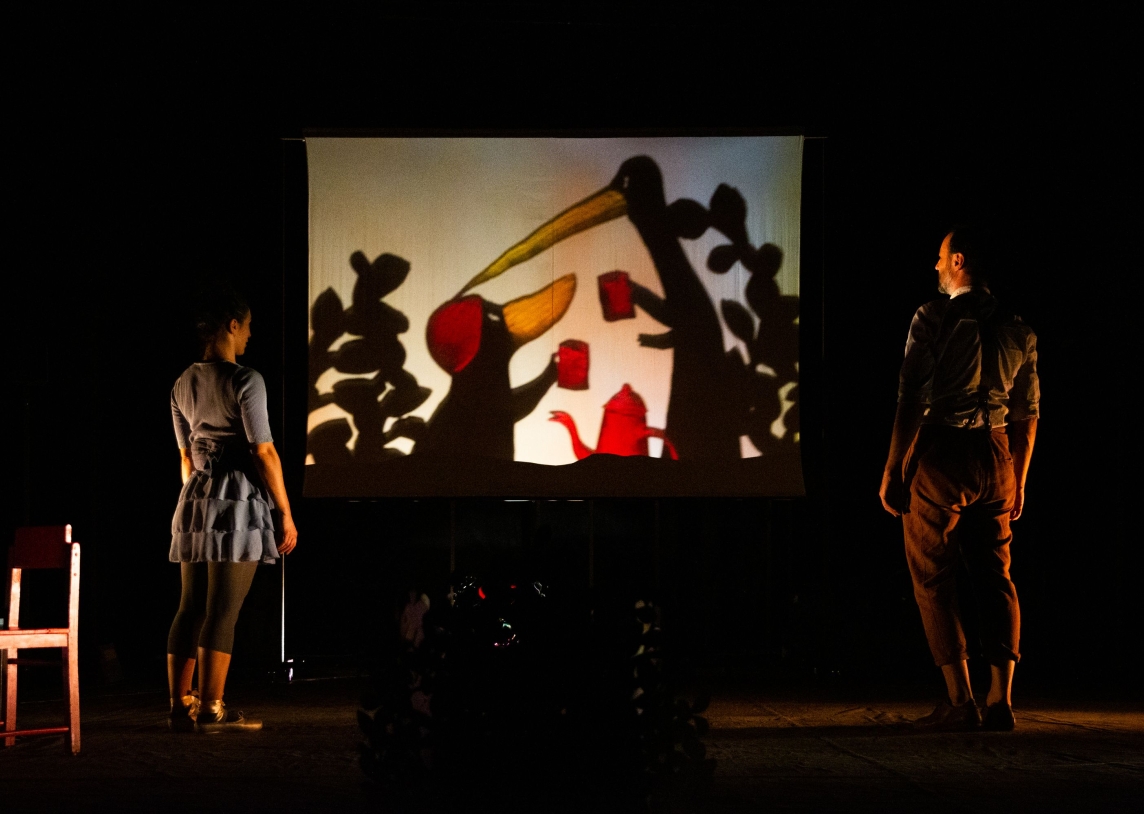- International Platform
- Content
Content
Teatro Gioco Vita: Sonia and Alfredo
Author: Tajda Lipicer
The critique was originally published in the newspaper Delo (27.9.2022), with which the platform collaborated during the Lutke Festival 2022.
Italian director and puppeteer Fabrizio Montecchi proves that a shadow can be a comprehensive semantic resource. He is one of the most important creators in the field of shadow theatre in Italy and the wider European theatre scene. In our country, he is best remembered for his award-winning production of Duck, Death and the Tulip, which shows, with sensitive consideration, that death and life are just two sides of the same coin.
Montecchi (director and set designer) also illuminates the themes hidden in shadows and underground holes with the right amount of sensitivity and courage in his performance Sonia and Alfredo (Ljubljana Puppet Theatre). The tale of escape, exclusion, loneliness, acceptance and openness of heart is based on a collection of picture books by the Belgian author Catherine Pineur. It tells the story of Alfredo (Tiziano Ferrari), a strange bird who no longer has a home and is looking for a place to put his red chair in an unknown world.
After being consistently rejected by the rest of the birds, he is invited for coffee by Sonia (Deniz Azhar Azari) and a deep friendship develops from a humble act of kindness. But the idyllic joy is interrupted when, one fine day, Sonia discovers that Alfredo has disappeared; to find him, she leaves home for the first time herself. At this turning point, the play unpacks the issue of refugeeism and war migration – Alfredo has gone to help his friends escape from a place "where it has become unbearable". In doing so, the creators of Teatro Gioco Vita once again cut into the very fabric of issues that we adults are often reluctant to discuss with our youngest children because of our (often unfounded) prejudices.
The images of this thematically sensitive production about fleeing the cruelty of war and finding safety again come to life in a tactile combination of graceful scenographic elements, Paolo Codognoli's music and subtly restrained but penetrating lighting design, which creates an inviting atmosphere by creating silhouettes and partial outlines. The shadow images projected onto the screen through the puppet's body are minimal, even modest, but the consistent use of colourful, prominent visual impulses makes them highly suggestive and further fuels the viewer's imagination.
The combination of two-dimensional shadows and three-dimensional scenic elements dynamically comes together to form a comprehensive and interdisciplinary unit of organic dimension that is in constant motion. The screen is as mobile as the body, which offers innovative procedures for contemporary shadow theatre, especially in the exploration of the relationship between the puppet and the animator.
In a combination of dramatic play and puppet animation, the performers move from role to role on the line animated character-acted character-narrator, and crossings can happen between points on the line, so that the actor as Alfredo talks to the animated shadow image of Sonia. The attempts to explore possible relationships between puppet and animator, which are more difficult to recreate in shadow theatre than in other disciplines of puppet animation, are exciting, but the synthesis between them is not always effective. The different material and immaterial levels of staging the characters do not lead to an organic fusion, but on the contrary often disorientate the spectator, especially as the levels of representation move between the anthropomorphic and the zoomorphic. Restricting the line to the animated character-narrator or simplifying the characters' layered staging would balance the production into the organic fusion that has been established so far.
Despite its minor stumbles, Sonia and Alfredo is a performance with a strong impact, which speaks of tolerance, compassion and acceptance, and especially of the fact that (unfortunately) not everyone is capable of these things.
This publication is written in the context of the project "European Contemporary Puppetry Critical Platform"

